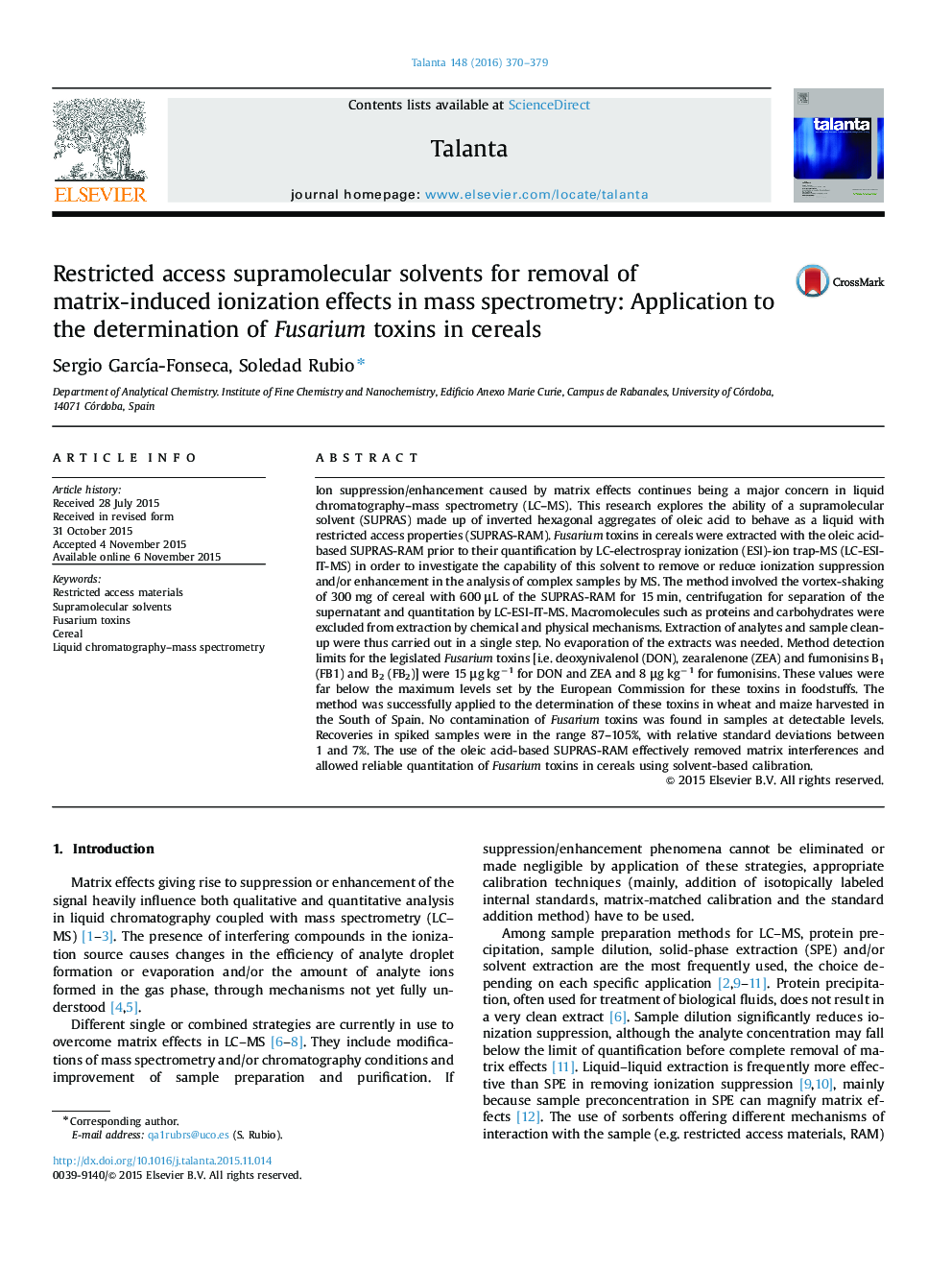| Article ID | Journal | Published Year | Pages | File Type |
|---|---|---|---|---|
| 1243797 | Talanta | 2016 | 10 Pages |
•Oleic acid-based supramolecular solvents showed restricted access properties.•Macromolecules such as proteins and polysaccharides were excluded from extraction.•Extraction/purification of Fusarium toxins in cereals was achieved in a single-step.•Fusarium toxins were quantified by LC-MS/MS using solvent-based calibration.•Restricted access solvents remove/reduce matrix-induced ionization effects in MS.
Ion suppression/enhancement caused by matrix effects continues being a major concern in liquid chromatography–mass spectrometry (LC–MS). This research explores the ability of a supramolecular solvent (SUPRAS) made up of inverted hexagonal aggregates of oleic acid to behave as a liquid with restricted access properties (SUPRAS-RAM). Fusarium toxins in cereals were extracted with the oleic acid-based SUPRAS-RAM prior to their quantification by LC-electrospray ionization (ESI)-ion trap-MS (LC-ESI-IT-MS) in order to investigate the capability of this solvent to remove or reduce ionization suppression and/or enhancement in the analysis of complex samples by MS. The method involved the vortex-shaking of 300 mg of cereal with 600 μL of the SUPRAS-RAM for 15 min, centrifugation for separation of the supernatant and quantitation by LC-ESI-IT-MS. Macromolecules such as proteins and carbohydrates were excluded from extraction by chemical and physical mechanisms. Extraction of analytes and sample clean-up were thus carried out in a single step. No evaporation of the extracts was needed. Method detection limits for the legislated Fusarium toxins [i.e. deoxynivalenol (DON), zearalenone (ZEA) and fumonisins B1 (FB1) and B2 (FB2)] were 15 μg kg−1 for DON and ZEA and 8 μg kg−1 for fumonisins. These values were far below the maximum levels set by the European Commission for these toxins in foodstuffs. The method was successfully applied to the determination of these toxins in wheat and maize harvested in the South of Spain. No contamination of Fusarium toxins was found in samples at detectable levels. Recoveries in spiked samples were in the range 87–105%, with relative standard deviations between 1 and 7%. The use of the oleic acid-based SUPRAS-RAM effectively removed matrix interferences and allowed reliable quantitation of Fusarium toxins in cereals using solvent-based calibration.
Graphical abstractOleic acid-based restricted access supramolecular solvent.Figure optionsDownload full-size imageDownload as PowerPoint slide
